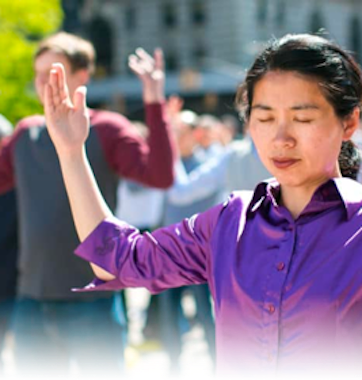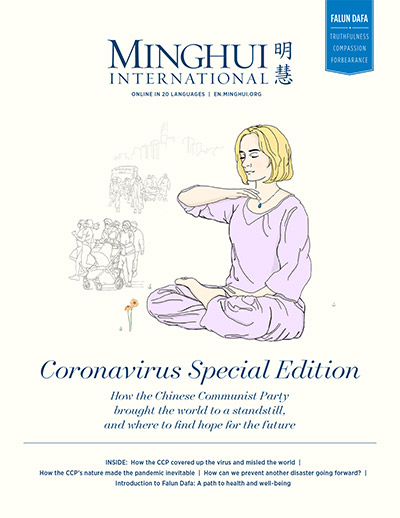(Minghui.org) WHO’s director general Tedros Adhanom Ghebreyesus announced on January 30 that COVID-19 remains a global health emergency. This decision was based on the discussions at the 14th meeting of the International Health Regulations (IHR) Emergency Committee on January 27. More specifically, the meeting concluded that “the recent rapid risk assessment continues to characterize the global risk of COVID-19 to human health and its ongoing transmission as high.”
“There is little doubt that this virus will remain a permanently established pathogen in humans and animals for the foreseeable future,” Ghebreyesus added. He said half of the deaths recently reported came from China.
Out of Paper for Death Certificates
As the COVID cases increased rapidly in late 2022, the Chinese Communist Party (CCP) abruptly ended the zero-COVID policy on December 7, worsening the pandemic. The number of infections, severely ill patients, and deaths exploded, overwhelming hospitals and crematories.
A doctor from a public hospital in southern China told South China Morning Post that they had run out of special paper for death certificates due to the recent high death toll. “I have never seen such a shortage of medical supplies in the past,” he said. “We issued nearly 80 death certificates in one week, when in the past we usually did one or two per month.”
Videos circulated online showed that hospitals in Shandong, Liaoning, Chongqing, Jiangsu, Heilongjiang, Jilin, and other provinces were all packed with patients before and during the recent Chinese New Year (January 22). One man in southern China described what he saw when he attended the funeral of a relative at a crematory on the morning of January 8. He said he was there from 1 a.m. to 5 a.m., during which time he saw nearly 100 bodies brought in for cremation. He even bumped into a dead body while walking around there. “It was so shocking that you did not want to look around. But you did not have a choice since there were people all around you waiting in line for cremation,” he explained. “So many people with so many dead bodies. It was really depressing and hopeless.”
“Funerary Music on the Street All the Time from Dawn to Dusk”
According to VOA, the lack of medicine in remote regions and the dereliction of duty by village officials also contributed to the high number of deaths of the elderly. The Chinese New Year is usually the most important and joyful time of the year, but this year, “there was funerary music on the street all the time from dawn to dusk.”
Liu Shihui, a lawyer from Xishan Village, Harqin Banner, Chifeng City of Inner Mongolia, called his family on January 23 (the day after the Chinese New Year) and learned that more than 20 people (mostly elderly) died in each of the two neighboring villages (Yujiayingzi Village on the west of and Xiaowuzhumeiqin Village on the sourth of Xishan Village). He said, “This was quite shocking because it was normal to lose one or two people in the winter, but usually no more than three or five. Now more than 20 people were gone in each village.”
Jie Lijian, a human rights activist from the countryside of Shandong Province, told VOA that at least 20 elderly residents had died of COVID in his hometown, Gaozhaizi Village in Gaotang County. One of them was a relative in his 60s, who died after his entire family got infected. This relative had pneumonia. After he caught the virus, he coughed non-stop and suffered high fever. He died around midnight.
Abandoned Places in the Pandemic
Liangshan Yi Autonomous Prefecture is a remote area in Sichuan Province, where the Yi ethnic group makes up about half of its 4.7 million residents, The latest wave of CVOID swept Liangshan in silence, reported VOA on January 30. One doctor from Xide County Hospital said many elderly residents in the region did not know exactly what COVID was and thought it was just a cold. For three days in a row (January 10-13), the hospital had over 150 patients every day who underwent CT scans to aid in COVID diagnosis and management). All the beds were occupied. One local senior center alone sent in 30-40 seniors who had tested positive. Moreover, 9 out of 10 medical workers were also infected.
Zhu Bin, a Christian who called for medication donation on behalf of Liangshan residents, referred to the area as “a place forgotten and abandoned in the COVID catastrophe.” Some local residents dared not sleep, because they were afraid they may never wake up again.
About 2,000 kilometers away from Liangshan, Jia County in Shaanxi Province faces a similar situation. Du Jinlian, a resident in Wentong Village said most people in Division 2 of the village had been infected between late November and early December. Du lost his appetite and had headaches for over 10 days, but he survived COVID. Not everyone was so lucky, though. “Six elderly residents in the village died in December,” he added. “The village Party Secretary knew the situation was grave, but he did not do anything. Nobody cares about us.”
Large Number of Household Registrations Canceled Per Day
A household registration officer from a police station in Mudanjiang City, Heilongjiang Province said he processed over 100 household registration cancellations due to deaths per day on average between December 20 and 31. The metro area of Mudanjiang has about 900,000 people with over 30 police stations. So the daily death count could be more than 3,000 per day, which would translate to 30,000 deaths (or about 3% of the population) in 10 days. Of course, not every death was caused by COVID, but the typical death toll (before COVID) has never been this high.
Chen Heyang, a resident of Huangpi District in Wuhan, Hubei Province, shared with Radio Free Asia (RFA) what he learned from a friend who worked in the civil affairs bureau. According to the friend, about 5,000 people in the district had died since the zero-COVID policy ended in early December. Huangpi has about 900,000 residents and the number of deaths is alarming because it is several times higher than normal. “There are many graves built around in the suburban areas recently. Lots of them,” Chen said.
Many CCP Members and Followers Have Died of COVID
Many CCP members and followers have recently lost their lives to the coronavirus, also known as CCP Virus.
E Hongbing, Sergeant I of Baishazhoujie Police Station of Wuhan, collapsed at the entrance of his own house on January 22, the Chinese New Year’s Day. He died at 55 the following day due to myocardial infarction, a symptom associated with COVID. Chen Liyan, a CCP member and former president of Hubei Institute of Fine Arts, passed away on January 25. Two artists in the same institute, Dong Li, who specialized in oil painting, and Nie Ganyin, who specialized in Chinese painting, have also lost their lives.
Chen Ziyu, former chair of the physics department and former associate dean of School of Physics in Beijing University of Aeronautics and Astronautics, died at 63 on Chinese New Year’s Day (January 22). Jia Qingjun, associate professor of media from Ningbo University in Zhejiang Province died at 48 the following day. Yang Cunchang, former dean of literature at Shandong Normal University and also author of several books on Marxism in literature, died at 60 in Jinan City, Shandong Province on January 26. Wang Yu, member of Chinese Academy of Sciences, passed away in Beijing on the same day.
An internal briefing from Nanjing City, Jiangsu Province, stated that the number of bodies cremated in the city between December 1, 2022 and January 2, 2023 was about 6 or 7 times higher than normal. For example, 493 bodies were cremated on January 4, 6 times the number on the same day the year before.
Nanjing Forestry University announced many obituaries recently, at least 23 between December 4, 2022 and January 13, 2023. This was close to the total number of 26 deaths announced between January and November 2022.
All content published on this website are copyrighted by Minghui.org. Minghui will produce compilations of its online content regularly and on special occasions.
Category: News & Events










